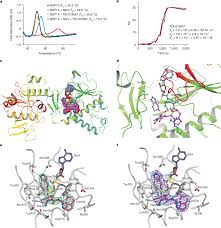Uncategorized Friday, 2024/12/20
Paxlovid was launched in December 2021. As an effective antiviral drug, it is an effective antiviral drug. But like many antiviral drugs before it, scientists know that at some point, paroxetine may lose some efficacy due to resistance.
Now, researchers dedicated to addressing such emerging threats have identified a novel approach for treating SARS-CoV-2 infection in a new study. They conducted a conceptual validation of a new class of antiviral drugs that not only target SARS, but also many RNA viruses, including Ebola virus and dengue virus. In addition, they can also target DNA viruses that replicate in the cytoplasm, including poxvirus. These findings may pave the way for faster and stronger responses to future epidemics. The relevant research results were published in the journal Nature, with the title “Small-molecule inhibition of SARS-CoV-2 NSP14 RNA cap methyltransferase”.
Our Related Proteins
The corresponding author of the paper, Professor Thomas Tuschl from Rockefeller University, said, “No one has found a way to inhibit SARS-CoV-2 RNA cap methyltransferase before. Our research has established RNA-capped methyltransferase as a therapeutic target and opened the door to the development of more antiviral drugs targeting pathogens, whereas previously we only had limited tools to combat pathogens.”
However, most antiviral drugs, including paroxetine, focus on disrupting viral proteases, which are different types of viral enzymes that break down proteins, mainly because they previously targeted these enzymes to prevent virus transmission. Tuschl said, “Inhibiting methyltransferase requires the use of non-traditional RNA substrates, which presents new challenges for drug discovery.”
As an RNA expert, Tuschl’s previous research has led to various RNA therapies for treating genetic diseases. During the COVID-19 pandemic, Tuschl restructured his laboratory to focus on the discovery of antiviral drugs. He realized that viral enzyme inhibitors, in addition to protease inhibitors, have significant advantages.
Tuschl speculates that the virus is unlikely to evade combination therapy targeting two unrelated viral enzymes simultaneously, such as combining protease inhibitors and methyltransferase inhibitors. He also realized that drugs targeting viral methyltransferases that are structurally different from human methyltransferases would have high selectivity and would not impair the function of human methyltransferases.

In order to search for molecules that can inhibit SARS-CoV-2 RNA capped methyltransferase NSP14, his team screened 430000 compounds at the Fisher Drug Discovery Resource Center at Rockefeller University in the early stages of the COVID-19 pandemic and found a small number of compounds that inhibit NSP14, which is a multifunctional enzyme with methyltransferase activity.
Then, these compounds underwent extensive chemical development processes to ultimately obtain optimized candidate drugs. Then, Charles M. Rice, head of the Virology and Infectious Diseases Laboratory at Rockefeller University, and his team conducted cell-based tests on compounds with improved biochemical inhibitory effects.
Finally, these authors tested one of the optimized compounds on mice under BL3 safety conditions: TDI-015051. And it has been confirmed that it can treat COVID-19 caused by SARS-CoV-2 infection like paroxetine. They also confirmed that even if SARS-CoV-2 mutates, this treatment is still effective and has a synergistic effect when used in combination with protease inhibitors.
Tuschl said, “Even used alone, SARS-CoV-2 is difficult to escape this compound. But as a treatment method combined with protease inhibitors, escape is almost impossible.”
These findings not only confirm that viral methyltransferase is a promising therapeutic target, but also indicate that the specific inhibitor developed by the Tuschl team has minimal side effects. He noticed that the mechanism of action of this compound is unique
In fact, this compound utilizes the unique structural features of viral methyltransferase and also requires the presence of reaction products from the methyl donor SAM, which means it selectively targets SARS-CoV-2 without interfering with human processes.
Tuschl reminds “We are not yet ready to test this compound in humans. Ideal clinical candidate drugs require improved stability, bioavailability, and a range of other pharmacological properties that still need to be optimized in the long term.”
In the near future, Tuschl Laboratory is expanding this research to explore inhibitors against respiratory syncytial virus (RSV), flaviviruses (such as dengue virus and Zika virus), monkeypox virus, and even fungal infections, as these pathogens all have similar enzyme sensitivities.
He said, “This study opens the door to targeting many pathogens. This is a new opportunity to prepare for future epidemics.”
Related Products and Services
SARS-CoV-2 Proteins and Their Target Proteins
Monkeypox Virus-related Proteins
Protein Expression and Purification Services
Reference
Cindy Meyer et al. Small-molecule inhibition of SARS-CoV-2 NSP14 RNA cap methyltransferase. Nature, 2024, doi:10.1038/s41586-024-08320-0.

